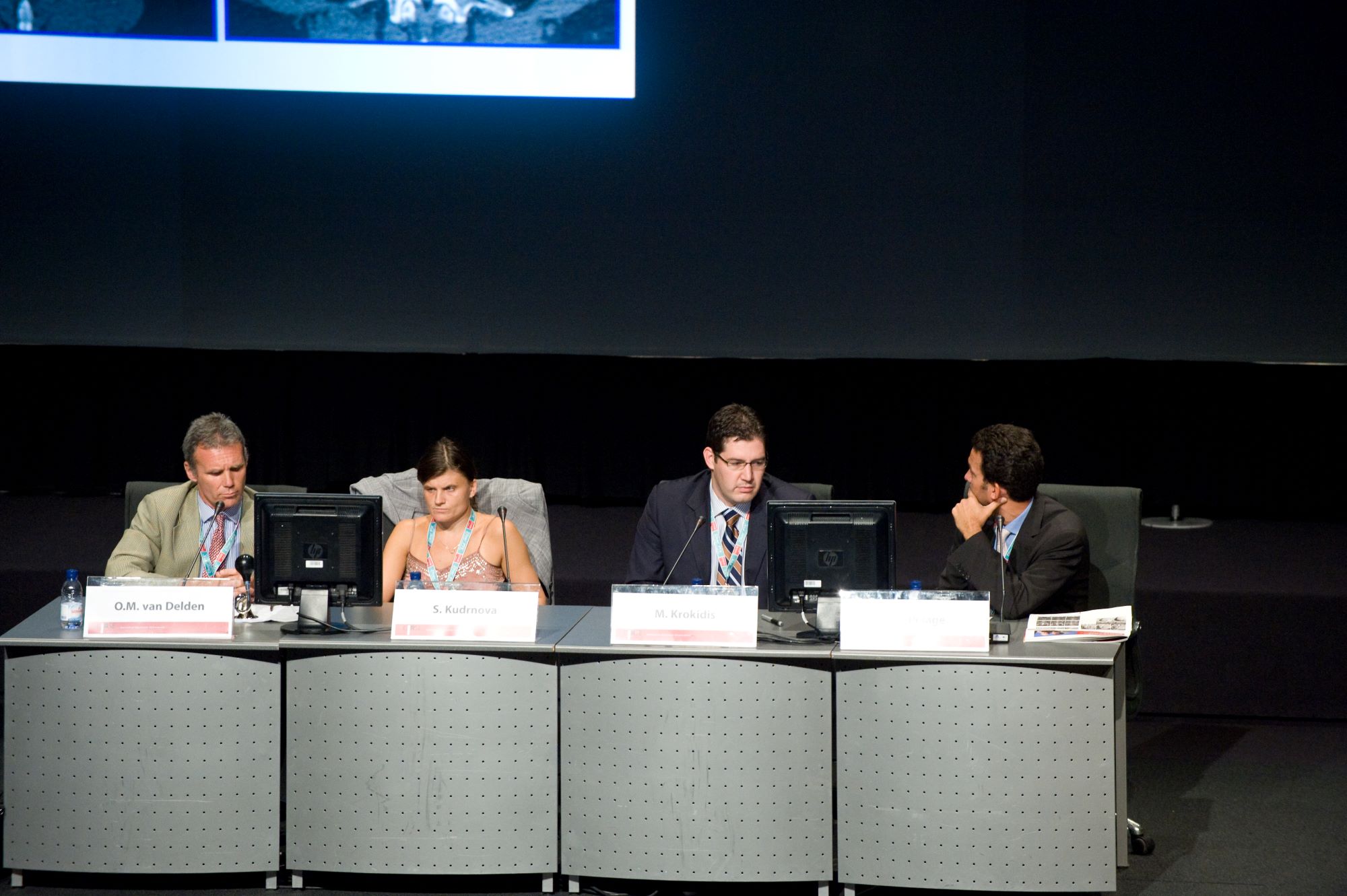CIRSE: What will be your first tasks as SPC chairpersons? What is your vision for the future of the annual congress?
O’Sullivan: To produce as good as or better a programme than 2024. A TALL ORDER! I want to hear from as many members as possible about what THEY want, and I have emailed many to ask them that precise question – please feel free to suggest topics and speakers by emailing: [email protected].
Krokidis: We would like to maintain the high standards of the congress with a global approach, aiming to be more inclusive towards the whole of the IR community while offering innovation, education, and exchange of ideas. The main vision is that the outcomes of our congress will shape the future of healthcare with the aim of helping as many patients as possible.
CIRSE: What are topics that are specifically close to your heart? Are there any topics from your own practices that you hope you can shine a spotlight on during CIRSE 2025?
O’Sullivan: I love deep venous intervention and treatment of pulmonary embolus. And I still do a lot of arterial work and tons of embolization. Miltos and I should complement each other quite well in that respect. I want to continue the great work as envisioned by our immediate Past President Christoph Binkert on clinical practice, because that is what I practice in Galway with my own beds/clinic/rounds/admissions/discharges, etc.
Krokidis: My personal clinical activities are very wide, and I have several favourite topics. Interventional oncology is a fascinating, continuously evolving field and needs to be strongly represented in the programme, however, peripheral arterial interventions, embolization, and IR management are also very close to my heart. In particular, clinical aspects of IR need to be highlighted as it is of paramount importance to share the CIRSE’s vision of clinical IR and shape the mindset of the whole IR community towards clinical services.
CIRSE: Which sessions did you find particularly exciting at CIRSE 2024 that you want to build upon for 2025?
O’Sullivan: I thought SPHAIRE, which focused on artificial intelligence and robotics in IR,) was incredibly interesting. That will undoubtedly grow. Renal denervation is on the way back into our practices, and I think carotid stenting is also undergoing a renaissance. Finally, MSK embolization is going to explode.
Krokidis: I am always excited about the FIRST@CIRSE sessions because of the innovations presented. I found the histotripsy technology presented this year very interesting and will be waiting for the outcomes that will be presented next year. We will also wait for outcomes of studies comparing sirolimus and paclitaxel and on the use of biodegradable scaffolds for peripheral interventions. Finally, robotic and navigation technology is growing steadily, and some interesting outcomes will be definitively coming from that field.
CIRSE 2025 will take place in Barcelona, Spain, from September 13-17. If you wish to become a part of the CIRSE 2025 programme, it’s not too early to start preparing your abstract! Abstract submission for the IR meeting of the year will open in January 2025.
In need of inspiration? All content from CIRSE 2024 is available on demand via the CIRSE Library!






